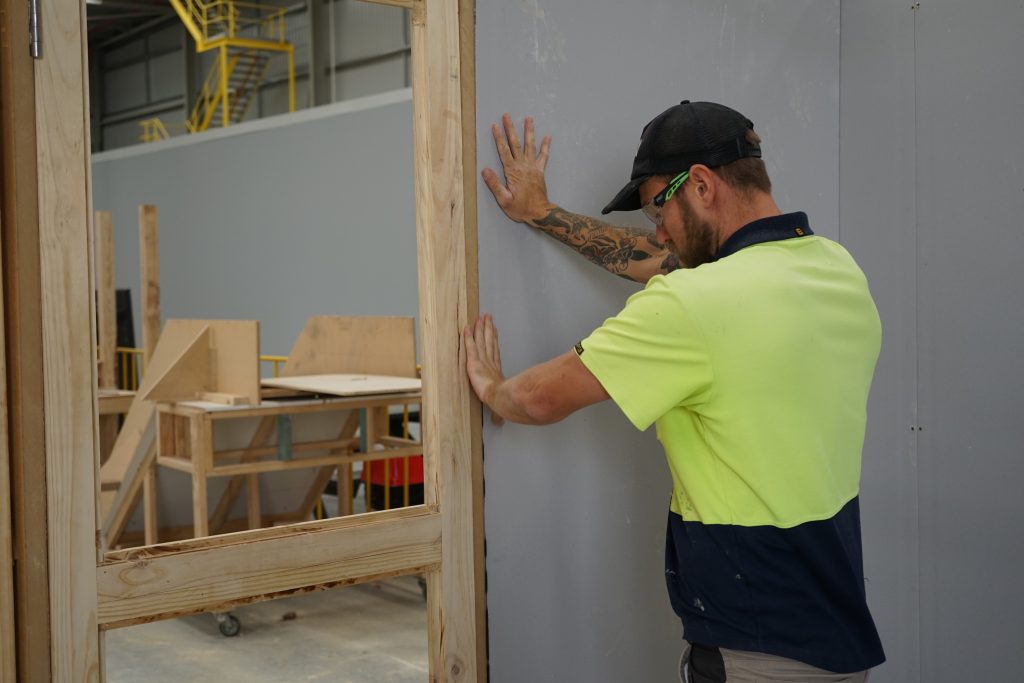
This week, we are putting the spotlight on a lesser known profession – Wall and Ceiling Liner. Without the help of these hardworking trade workers, buildings wouldn’t have proper insulation against extreme temperatures. Moreover, we would be subjected to unsightly wires and plumbing pipes that would ruin the aesthetics of our homes. So, without further ado, let’s find out what’s it like to be a Wall and Ceiling Liner and if this is a suitable career pathway for you.
What Does a Wall and Ceiling Liner Do?
Wall and Ceiling Liners apply and fix plasterboard, suspended ceilings, fire rating systems, acoustic tiles and composite wall linings to buildings and apply decorative and protective coverings of plaster, cement and similar materials. When plaster is applied to a building, it serves dual functions of structural reinforcement and implementation of a design aesthetic.
Some tasks and duties associated with the job are:
- Determining plasterboard layout and installing insulation and vapour barriers
- Measuring, marking and cutting plasterboard, lifting and positioning panels and securing them to walls, ceiling and battens
- Preparing corner beads and securing them in position
- Fixing pre-cast cornices, panel mouldings, ceiling centres and other plaster fittings
- Covering joins and nail holes with wet plaster and sealing compounds and smoothing them using wet brushes and sand paper
- Mixing and applying coats of plaster, cement and render to structures using trowels, levelling and smoothing coats to uniform thickness
- Plumbing and straightening corners, angles and wall and ceiling surfaces
- Creating decorative textures in finishing coats
- Applying and finishing acoustic, insulating and fireproofing materials bonded with plaster, plastic cement and similar materials.
How to Become a Wall and Ceiling Liner?
To become a certified Wall and Ceiling Liner, you will need to complete a Certificate III course in Wall & Ceiling Liner. This qualification takes 4 years to complete. As part of the qualification, you are required to undergo training with a Group Training Organisation (GTO). This is where we can help you. Skill Hire is a GTO that connects you to a Host Employer who in turn will give you practical work experience while studying. To learn more about doing an apprenticeship with Skill Hire, click here.
If you are still in school, you can enrol in a Certificate II course in Construction Pathways (CPC20211). This 12 week program aims to provide participants with an insight into the construction industry and the chance to learn basic hand and technical skills. For more information, click here.
Where Do Wall and Ceiling Liners Work?
Wall and Ceiling Liners work on both internal and external finishes as part of the building construction process, renovations or historical restoration work. As a Plasterer, you will have exceptional attention to detail and knowledge of a broad range of finishes and styles.
What Kind of Skills Do You Need to be a Wall and Ceiling Liner?
- Enjoy practical work
- Good hand-eye coordination
- Able to work at heights
- Able to work neatly and accurately
- Able to read, interpret and work from plans
How Much Do Wall and Ceiling Liners Earn?
Wall and Ceiling Liners enjoy an average salary of $83,200 per year.
Source: Jobs Outlook
How is the Labour Market Looking for Wall and Ceiling Liners?
The number of people working as Wall and Ceiling Liners grew strongly over the past 5 years and is expected to grow strongly over the next 5 years from 34,500 to 38,700 by 2023. The demand for
How Can Skill Hire Help?
You already know that you can commence a Wall and Ceiling Liner apprenticeship with Skill Hire but did you know that we are also a recruitment company? Our labour hire division can help find suitable employment for you once you complete your qualification and training. For more information on how Skill Hire can help you pursue a career as a Wall and Ceiling Liner, please get in touch with our team on 9376 2800 or visit www.skillhire.com.au



